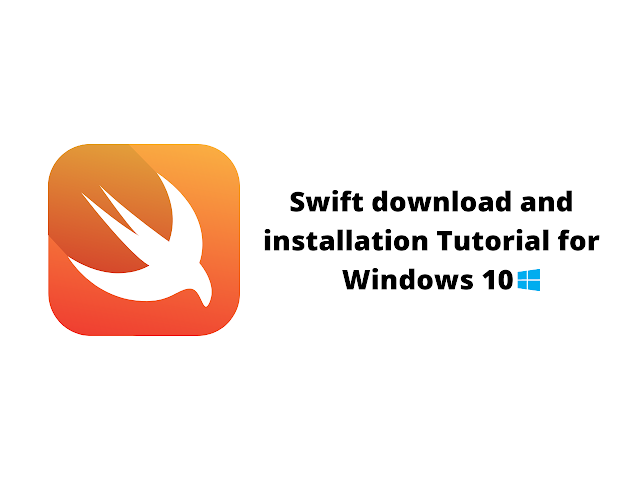

#Run swift on windows code#
This file will have the following code inside: print("Hello World !") To get started with the compiler, let's write some code ! Create a file somewhere on your system namely hello.swift. For more information about this project, please visit the official repository at Github here. You need to compile the file before running it, so if your code is valid and you click on Compile, you will be able to run it with the Run button, which normally will open a command prompt with the output of your code if there's any of course. By default, it's installation path is at C:/Swift. Now you need to understand how the project works, after installing Swift For Windows, you will basically have at your disposition an executable that works as a compiler, it offers a graphical user interface that allows you to select the swift source file that you want to compile:
#Run swift on windows install#
The installer file size is around 110MB and you will be the one who decides where to install it.

Download SwiftForWindows compilerĪs first step, you need to download the installer of Swift For Windows from the releases page of the project at Github here. In this article, we'll show you an easy way to get started with the programming with the Swift Language in a Windows Environment. The project works with the Swift compiler for Cygwin, MSVC, MinGW. The open source SwiftForWindows project provides an easy-to-use development environment for Swift programming for Windows applications. Swift embraces modules, eliminating the need for headers and the code duplication they entail. As a complete and independent language, Swift packages core features like flow control, data structures, and functions, with high-level constructs like objects, protocols, closures, and generics. Although inspired by Objective-C and many other languages, Swift is not itself a C-derived language. The Swift Language is a high-performance system programming language with a very clean and modern syntax, that offers seamless access to existing C and Objective-C code and frameworks, being memory safe by default. It's worth to mention that not everyone can afford the purchase of an apple device to work with this language, so if you are one of those that work in a windows environment and you may like to introduce yourself to the Swift Language, then you have found the correct article to get started with. To be honest, although may not want to work totally with this language on this environment to create applications or something like that, you may find very useful the fact of programming in this language in a Windows environment just for learning purposes of the language itself and its syntax.


 0 kommentar(er)
0 kommentar(er)
